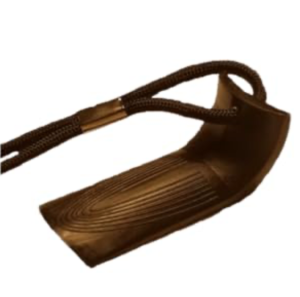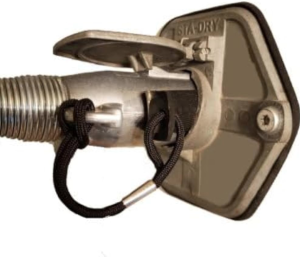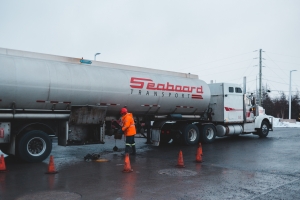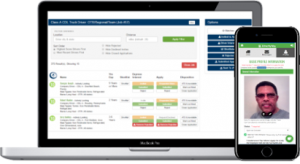
There is a reason people say, ‘the future is now.’
While self-driving cars often take the spotlight, the development and use of autonomous long-haul trucks have the potential to revolutionize the transportation industry on a global scale.
From increased efficiency and lower operating costs to improved safety and reduced carbon emissions, self-driving trucks promise to be the solution to several ongoing challenges and the driving force bringing the transportation industry into the future.
But are there already self-driving trucks on the road? Should CDL drivers be worrying about losing their jobs to a machine? Keep reading to find out the reality behind self-driving trucks and what they mean for the future of truck drivers around the world.
A Little Background
The automation of vehicles has come a long way in recent years, starting with the initial introduction of advanced driver assist systems, or ADAS, which includes automatic emergency braking, lane departure warnings, electronic stability control and adaptive cruise control.
Although most modern trucks now come equipped with ADAS, that is still quite different from the fully autonomous vehicles promised by several prominent technology and transportation companies.
However, companies like EASE Logistics have already decided to take this technology one step further.
In early 2023, it was announced that EASE was the chosen host fleet partner for the Ohio Department of Transportation (ODOT) and DriveOhio’s Rural Automated Driving Systems (ADS) project. Soon after, drivers on Ohio roadways might have spotted two colorful semi-trucks equipped with AI vehicle-to-vehicle communication, a leader and a follower truck nicknamed ‘Tom’ and ‘Jerry.’
For now, this leader-follower model, also called platooning, is essential to evaluate and perfect the technology. When in platooning mode, the lead driver controls speed, braking, and acceleration, while ‘Tom,’ the staffed and connected follower semi, is programmed to match ‘Jerry’s’ movement exactly.
EASE is part of an impressive list of companies that have been using breakthrough technology to move the industry one step closer to fully automated freight runs.
In December of 2021, innovative company TuSimple made history by becoming the world’s first company to operate a fully autonomous semi-truck on open public roads without a human on board. The truck naturally interacted with other motorists, navigating traffic signals, emergency lanes, on-and-off-ramps, and highway lane changes.
Companies like TuSimple, Tesla, and Waymo are all continuing to test out new models and demonstrate their capabilities in real world scenarios, although none have taken the leap to conduct regular, fully driverless freight runs.
What are the Benefits?
With the likelihood of future breakthroughs on the horizon, it is important to understand the benefits offered by self-driving trucks.
Increased productivity and efficiency are major benefits most developers point to. Fully autonomous trucks do not have to follow the FMCSA guidelines for regular break times, making runs more time and fuel efficient.
Regulated safety measures have convinced some developers that self-driving trucks would decrease the likelihood of accidents and collisions. Using sensor systems and programmed defensive driving, a computer could detect things earlier and would not become tired or distracted.
Jobs created by the need to continuously develop, program, and test new trucks. In fact, a recent Department of Transportation-funded study estimated that between 26,400 and 35,100 jobs would be created by automating long-haul trucking, while leading to minimal layoffs.
Potential Challenges
Something as revolutionary as self-driving vehicles cannot come without their own challenges, especially for those fearing this has the potential to disrupt their way of life.
Job displacement is the main concern of truck drivers around the world fearing autonomous vehicles will decrease the need for actual drivers. However, due to the ongoing truck driver shortage and the perpetual need for drivers at the first and last mile stages of pickup and delivery, experts believe layoffs will remain minimal.
Public perception is a large factor standing between innovative breakthroughs and actual real-world application. A recent study by AAA revealed that only 9% of Americans trust self-driving vehicles, while 68% expressed fear about the technology. This distrust is only seeming to grow with more announcements, making it difficult for companies to launch fully self-driving trucks without fearing public backlash.
Looking to the Future
There is no way to know for sure what will be the future of self-driving trucks, but experts predict that autonomous trucks may arrive sooner than fully autonomous cars, with commercial vehicles potentially operating as early as 2025.
Aurora Innovation, a software company founded in 2017 by former employees of Uber, Tesla, and Waymo, has plans to deploy up to 100 fully autonomous trucks in 2025, while additionally beginning to sell their fleet to other companies.
Although there has been some legislative pushback by labor rights organizations in California, 23 states have already authorized the testing and deployment of driverless vehicles. While public perception remains mostly negative, it could potentially improve as more successful autonomous vehicles continue to launch.
For over a century, the transportation industry has been essential to the global economy and way of life. Today, companies from around the world are pushing boundaries to expand the scope, efficiency, and safety of this important field with the development of fully automated trucks.
For more information on the future of trucking and to find out about exciting developments in the industry, be sure to check out more posts on our blog and follow us on social media!





 2. Weigh My Truck
2. Weigh My Truck 2. Sanvello or Headspace
2. Sanvello or Headspace
















